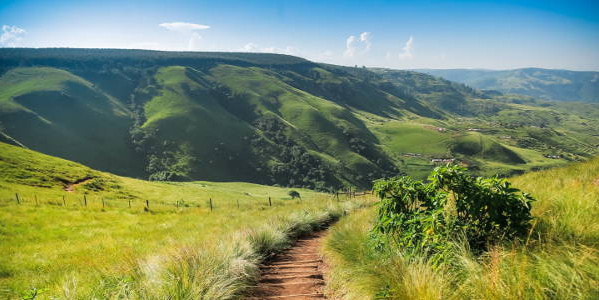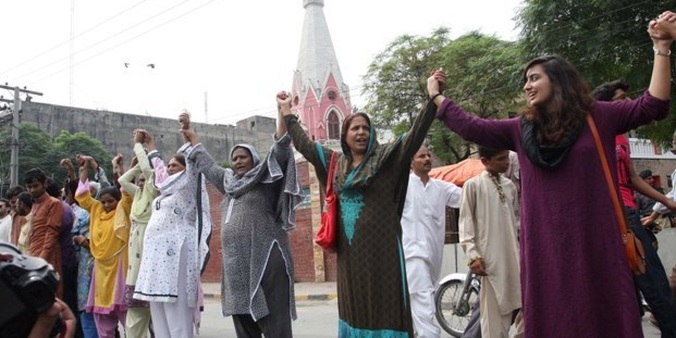On the surface, Alan Paton’s 1948 novel, Cry, The Beloved Country, is about Africa, South Africa in particular, and the drought-plagued province of Natal, on the eastern side of the country. Paton writes movingly about rolling hills, deep, river-fed valleys, and grassy plains that for millennia served as sustenance for the people of Africa. The geography features so prominently in the narrative, that other reviewers have called the geography “one of the book’s most important characters.” But this novel is set during a period of physical and cultural drought. The land is as barren as the tribal system that European colonialism has broken, uprooted and tossed aside. Beneath the surface is a story larger than Johannesburg, larger than Africa itself. It is a story of heartache and hope amid racial tension, and the possibility of reconciliation.
Cry, The Beloved Country tells the story of two men, both fathers. One black, the other white. Their lives collide through the actions of their sons. Stephen Kumalo, the primary focus of the novel, is an African reverend. He makes the long journey from his rural village of Ndotsheni to the overflowing slums of Johannesburg in search of his sister Gertrude and his son Absolom. Kumalo represents the village elder—wise in his humanity, naïve to the ways of the city, rooted in community and tradition—faced with a rapidly changing world. As he embarks on the train for his first visit to the great city, we read: “The journey had begun. And now the fear back again, the fear of the unknown, the fear of the great city where boys were killed crossing the street, the fear of Gerturde’s sickness. Deep down the fear for his son. Deep down the fear of a man who lives in a world not made for him, whose own world is slipping away, dying, being destroyed, beyond any recall” (44).
In Johannesburg, Kumalo discovers that the city has broken his family, stolen their innocence. His sister is a prostitute, his son, Absalom, a killer with a pregnant fiancé. The city tries to break Kumalo too, but he is strong, and resists. He longs for his village, where the tribal rhythms promise peace and safety, and tries to convince his sister and his son’s fiancé to return home with him. His sister will not come.
James Jarvis is a well to-do white farmer. His son Arthur lives in the city where he fights for the civil rights of the black South Africans. It was Arthur that Absalom killed. Jarvis travels to Johannesburg to understand what happened to his son. Jarvis did not know Arthur well, and in mourning, begins to read the articles and speeches he had written in his fight for justice. He meets Kumalo, the father of his son’s murderer, and they realize they live near each other in rural Natal. When Absalom is sentenced to death, both Jarvis and Kumalo return home to the barren countryside.
But something has changed. These men, so separate in wealth, status, culture and race, have both lost sons, one at the hand of the other. Their paths, always parallel, have now come together. Jarvis, who before was content to avoid thinking about the injustice in South Africa, begins using his wealth to help the tribes people in the village. He sends an engineer to show them how to plow the land in new ways that will prevent erosion. He begins work on a dam that will keep water through the next drought. His men show the African farmers how to corral their cattle and collect dung for fertilizer. But why is this progress necessary? Because colonials have segregated society, and pushed the tribes onto smaller and smaller pieces of land, where traditional farming causes erosion, and where water supplies quickly run out.
The novel closes in the early morning on the day of execution. Kumalo goes to a mountain to pray, and meets Jarvis at the foot of the hill, where they mourn together. On the final page, dawn breaks.
Why dawn? Jarvis and Kumalo have come to embody a future South Africa that Arthur wrote about in one of his papers, a future made possible not through power or law, but through sacrifice and love. “There is only one thing that has power completely, and that is love. Because when a man loves, he seeks no power, and therefore he has power. I see only one hope for our country, and that is when white men and black man desire neither power nor money, but desiring only the good of their country, come together to work for it” (71).
Cry, The Beloved Country is not a utopian dream of easy answers and quick solutions. Rather, Paton reveals the complex nuances of racial and cultural tension and hints as the painful, tedious work that must be done to bring about reconciliation and open the floodgates for the rising tide that raises all ships, waters all fields, and provides nourishment for all our children. The title is derived from a passage where Paton warns about the danger of loving the familiar too much:
“Cry, the beloved country, for the unborn child that is the inheritor of our fear. Let him not love the earth too deply. Let him not laugh too gladly when the water runs through his fingers, nor stand too silent when the setting sun makes red the veld with fire. Let him not be too moved when the birds of his land are singing, nor give too much of his heart to a mountain or a valley. For fear will rob him of all if he gives too much.”
When we love our home, our culture, the things that make us feel familiar, too much, that love may turn to fear and violence in the face of a perceived threat to our norms. Cry, The Beloved Country offers a sober, beautiful reminder that another way is possible.



 RSS Feed
RSS Feed
